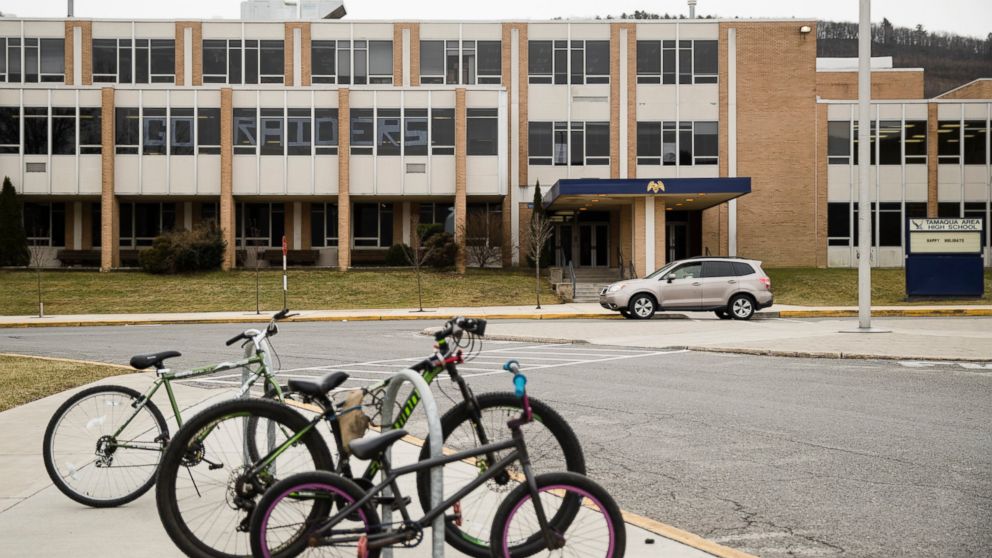
Parents are going to court to block a Pennsylvania school district from allowing teachers to carry guns in school, the latest flashpoint in a debate playing out in many states over whether it’s wise to arm educators to protect students from mass shooters.
The district in Tamaqua, a coal-mining region about 90 miles (145 kilometers) from Philadelphia, serves more than 2,100 students in three schools and is believed to be the first school system in Pennsylvania to let teachers carry weapons.
Tamaqua school board members “endangered their community” when they approved a “manifestly illegal” policy to give weapons to teachers and other school employees, according to a lawsuit filed by three parents and a grandparent.
“A teacher’s role is to teach,” Holly Koscak, one of the plaintiffs, said Friday at a news conference. “We should not be putting those extra roles on a teacher when it’s out of their scope.” She said her daughter, a sophomore, is “very anxious” about having armed teachers in school.
The teachers union had already filed suit to overturn the policy.
Teachers are allowed to carry weapons in several states, including Texas, Missouri and Ohio, and a number of other states are considering similar measures in the wake of the Parkland, Florida, school massacre last February.
The National Education Association, the nation’s largest teachers union, says its members “overwhelmingly reject” proposals to have them carry guns in school. Using the hashtag “ArmMeWith,” some teachers have taken to Twitter to express their opposition.
In Florida, the panel investigating the massacre at Marjory Stoneman Douglas High School recommended that teachers who volunteer and undergo extensive background checks and training be allowed to carry concealed guns on campus. The state teachers union and PTA oppose it.
In Lee County, Virginia, a school district is trying to persuade skeptical state officials to allow it to become the state’s first county to arm teachers and staff. The district says it cannot afford to hire more than a few resource officers to protect 11 schools.
Mo Canady, executive director of the National Association of School Resource Officers, said law enforcement officers are likely to be better trained for situations in which they might have to shoot a student or look for a shooter. But he said districts that do not have the money for a school resource officer face a difficult choice.
“I realize there are poor rural districts throughout this country,” Canady said, citing schools that cannot afford a resource officer without federal or state help. “I don’t know that I’m in a position to say, well, you shouldn’t have anyone armed.”
In Tamaqua, the firearms policy approved in September says that teachers and other employees can volunteer to carry concealed, district-issued guns after training. The policy also establishes guidelines for the use of force.
“The rationale for the policy is to prevent the apocalypse,” school board member Nicholas Boyle said. “When we have a shooter in the building, how are we going to stop that shooter from killing more and more and more people? We have to have an armed presence there.”
Citing operational security, the district will not say whether an armed force is already present in the schools. But Boyle said that “the litigation is not stopping the policy.” He said the number of volunteers who signed up for gun training has exceeded his goal of at least a dozen.
Pennsylvania education officials said they are not aware of any other district with a policy of arming teachers. Gov. Tom Wolf, a Democrat, is opposed to the idea.
“The Wolf administration has maintained that school districts may only authorize trained school police officers and school resource officers to carry firearms around students in our schools, should the school professionals feel they need it,” education department spokeswoman Nicole Reigelman said.
Boyle said the district has received no blowback from the state so far.
———
Associated Press Writer Carolyn Thompson in Buffalo, New York, contributed to this story.





